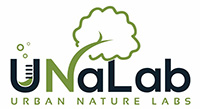 |
Inspiration Card
Co-Creation |
|
Format of the Tool
|

|
C17 The Actors Map
| Idea Generation | Stakeholder & Citizen Engagement | Need finding | Planning & Development | Evaluation | Learning |
5-10
|
Timeframe
|
|
|
Hours
|
1,5-2
|
The actors map is used at the beginning of the co-creation process in order to identify the different actors and their relationship between each other. It depicts key individuals and organisations that influence a topic, allowing insight into the players within a system.
Step-by-step guide on how to run the activity:
1. Preparation: Identify the topic and set clear boundaries
Boundaries include: geographic scale of the map; degree of specificity of the map and the level of detail
2. Preparation: Frame the System
Define the conceptual guide for the session – the loose organizing structure that identifies the map’s core (core beneficiaries, primary stakeholders) and the subsystems that influence the main system
3. Preparation: Identify an initial set of key actors and roles in the system
Identify relevant actors and roles from internal documents and write these actors’ names on sticky notes.
4. (Optional): Populate a draft map and share it with participants
Depending on how well developed you want the actors map to be an optional final step in the preparation process you can place the actors identified in the previous step into the draft system frame and share the draft actors map with participants in advance of the session.
5. Facilitation: Introduction (5 mins)
Provide a brief introduction to the exercise – overview of activity and introduction to actor mapping
6. Facilitation: Populating the Map with actors (15-20 mins)
Participants begin to build the actor maps. The prelabelled sticky notes provide participants with examples to stimulate additional brainstorming.
7. Facilitation: Refining the Actor Map (20 mins)
Participants are given the opportunity to react to a draft actors map, refine their earlier work and make changed to adjust for external context
8. Facilitation: Mapping level of engagement, relationships and connections (15 mins)
Participants identify levels of engagement of different actors, as well as relationships and connections among actors, organizations and related systems
9. Facilitation: Identifying momentum, blockages and opportunities (15 mins)
Participants identify momentum and blockages in the system based on their understanding of the relationship among actors, organizations and related subsystems
10. Facilitation: Discussing implications (15-45 mins)
Example Questions:
What new people or organisations need to be involved to move forward? What is the best way to engage them?
Where in the system has our organization had the most/least influence?
11. Facilitation: Review next steps (5mins)
Provide participants with a clear overview of next steps (e.g. plans regarding how maps will be used, how can they edit the maps, whether the information will be publicly available, etc.)
12. Evaluating the maps and refining them if needed
- A0 poster of the actor’s map
- markers
- sticky notes
- figures
- Optional: a set of pre-populated sticky notes (to be developed during the preparation process)
- Displays relative position of actors within a system
- Identifies opportunities to improve performance of an organisation
- Supports visualization of communities
